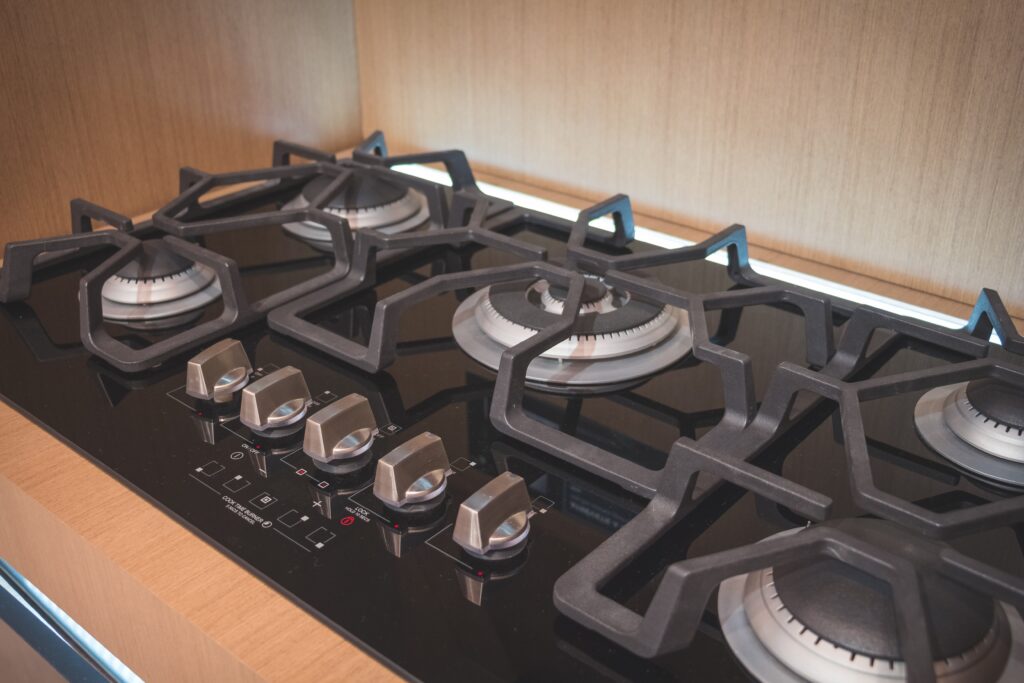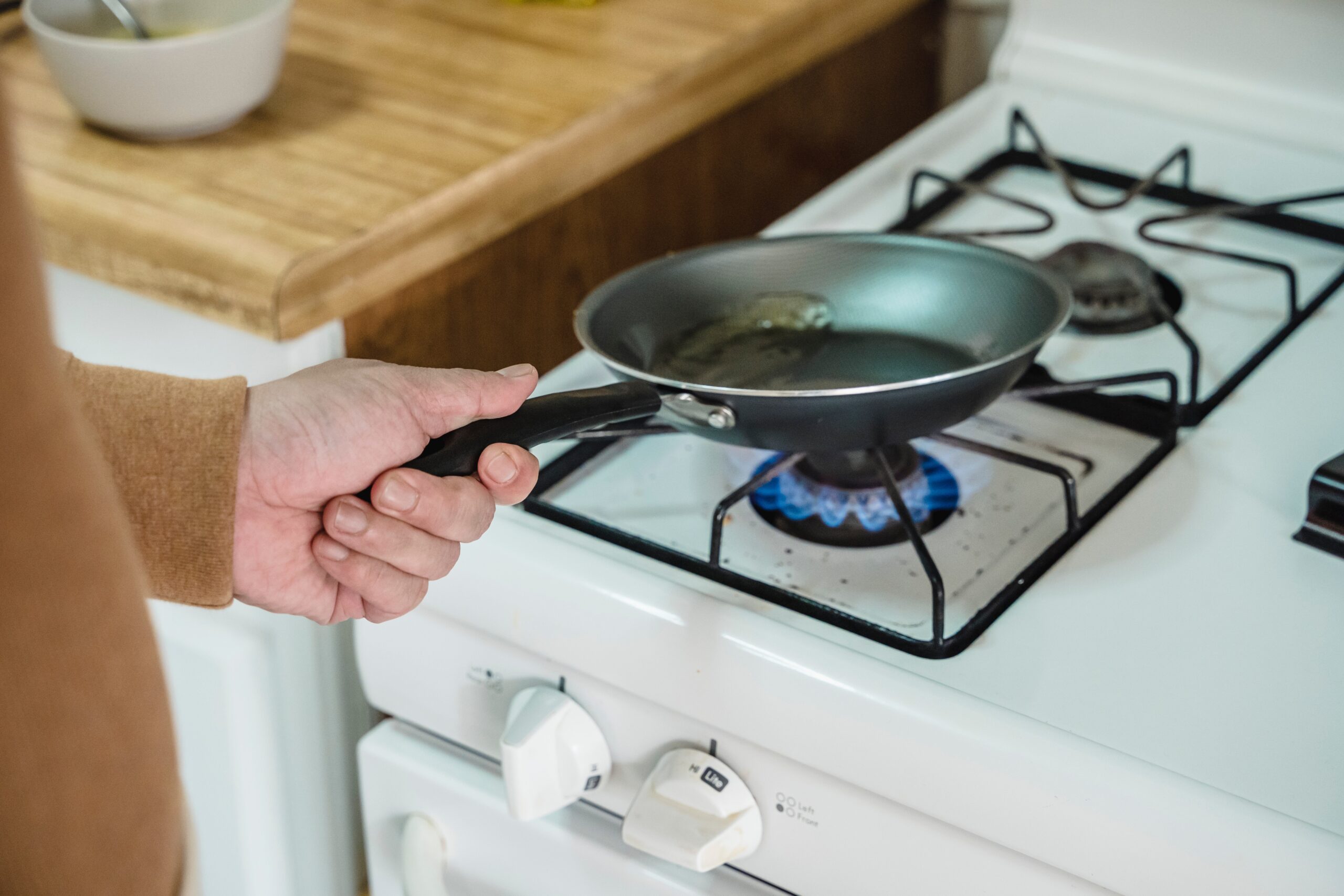Gas stoves are an integral part of modern kitchens, offering efficient and precise cooking capabilities to chefs and home cooks alike. In this article, we (Gas Stove Solutions) will explore the world of gas stoves, covering their history, ignition methods, key features, health concerns, and their environmental impact.
History of the Gas Stove and Its Inventor
Gas stoves, the reliable kitchen companions we know today, have a rich history dating back to the early 19th century. Let’s journey through time to discover how these remarkable appliances evolved:
Early Experiments and Patents
The concept of gas stoves began to take shape in 1802 when Zachäus Winzler developed an early prototype. However, these early attempts were experimental and didn’t gain much traction. The turning point came in 1826 when James Sharp, a British inventor, patented a gas stove in Northampton, England. He was so confident in his invention that he established a gas stove factory a decade later in 1836. Sharp’s innovation was marketed by the firm Smith & Philips in 1828, laying the foundation for the future of gas cooking.
Alexis Soyer: A Culinary Advocate
One of the key figures in the early adoption of gas stoves was Alexis Soyer, a renowned chef at the Reform Club in London. In 1841, Soyer made a bold move by converting his kitchen to use piped gas. His reasoning was simple yet revolutionary: gas was cost-effective because the supply could be easily turned off when the stove wasn’t in use. This move not only showcased the practicality of gas stoves but also paved the way for their acceptance in the culinary world.
The Great Exhibition and Commercial Success
The gas stove made its public debut at the Great Exhibition in London in 1851. However, it wasn’t until the 1880s that this technology achieved commercial success in England. At this point, a reliable network of gas pipelines had spread across much of the country, making gas readily available and cost-effective for household use. It marked the beginning of a new era in home cooking.
The Evolution of Design and Efficiency
Early gas stoves were rather cumbersome, but innovation didn’t stop there. Soon, ovens were integrated into the base of the stove, and the size was reduced to fit better with kitchen furniture. By the early 1920s, gas stoves with enameled porcelain finishes became widely accessible, making cleaning easier than ever.
Additionally, heavy insulation was introduced for fuel efficiency, making gas stoves not only practical but also environmentally friendly.

As we appreciate the convenience and efficiency of modern gas stoves, it’s important to remember the pioneers and innovators who shaped their history. From the experimental beginnings to the refined and efficient appliances we use today, gas stoves have come a long way, thanks to the visionaries who believed in the power of this technology.
Ignition Methods
Gas stoves are typically ignited through one of two methods: electronic ignition or a pilot light. Electronic ignition, the more modern approach, uses a spark or hot surface to ignite the gas when the burner is turned on. In contrast, older models employed a continuous pilot light to keep a small flame burning, ready to ignite the main burner when needed.
Electronic ignition is more energy-efficient and eliminates the need for a continuously burning pilot flame, making it the preferred choice in contemporary gas stoves.
Features of Gas Stoves
- Burner Heat: Gas stoves offer precise control over burner heat, allowing for quick adjustments during cooking.
- Design and Layout: They come in various designs and layouts, including traditional four-burner models and sleek, modern designs with multiple burners and built-in ovens.
- Size: Gas stoves are available in different sizes to suit various kitchen spaces, from compact models for small kitchens to larger, professional-grade stoves for serious cooks.
- Oven: Many gas stoves come equipped with ovens, providing a versatile cooking solution for baking and roasting.
- Programmable Controls: Some models feature programmable controls, timers, and digital displays for added convenience.
- Safety Factors: Gas stoves incorporate safety features such as automatic shut-off valves and flame failure sensors to prevent gas leaks and accidents.
- Efficiency: Gas stoves are known for their energy efficiency, as they heat up quickly and provide even cooking temperatures, reducing cooking time and energy consumption.
Health Concerns
While gas stoves are efficient, they do raise health concerns due to the release of combustion byproducts. Incomplete combustion can produce carbon monoxide (CO), a colorless and odorless gas that, if not properly vented, can pose health risks.
Additionally, gas stoves may emit particulate matter and volatile organic compounds (VOCs), which can contribute to indoor air pollution. Proper ventilation and regular maintenance are crucial to mitigate these health concerns associated with gas stoves.
Climate Impact
Gas stoves also have an environmental impact. The burning of natural gas releases carbon dioxide (CO2) into the atmosphere, contributing to greenhouse gas emissions and climate change. Transitioning to more energy-efficient appliances, promoting cleaner energy sources, and enhancing kitchen ventilation systems can help reduce the climate impact of gas stoves.
Conclusion
This comprehensive overview covers the history, ignition methods, features, health concerns, and environmental impact of gas stoves, providing readers with a well-rounded understanding of this kitchen appliance.

Sidhhi has a lifelong love for cooking and is your go-to expert for all things related to gas stoves and kitchen magic. With years of experience in the kitchen, Sidhhi has mastered the art of cooking on gas stoves. Her mission is to make your cooking experience safe, enjoyable, and efficient.
